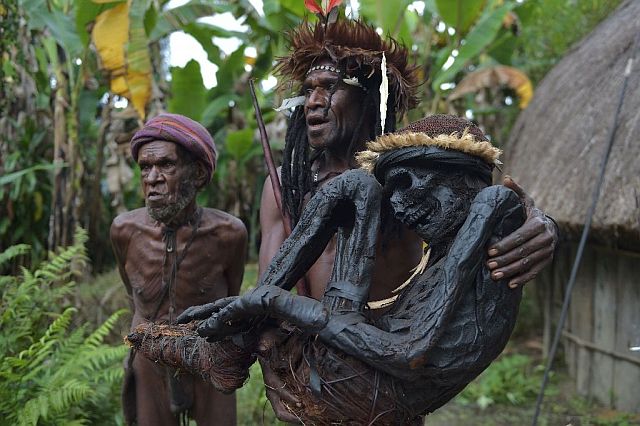
Tribe chief Eli Mabel holds the mummified remains of his ancestor, Agat Mamete Mabel, in the village of Wogi, in Wamena. (AFP)
Wamena, Indonesia – Cradling the centuries-old remains of his mummified ancestor, tribe leader Eli Mabel lays bare an ancient tradition that has all but vanished among the Dani people in the Papuan central highlands.
The tiny, blackened, shrunken figure he carries was Agat Mamete Mabel, the chieftain that ruled over this remote village in Indonesian Papua some 250 years ago.
Honored upon death with a custom reserved only for important elders and local heroes among the Dani people — he was embalmed and preserved with smoke and animal oil.
Nine generations on and his descendent Eli Mabel is the current chieftain in Wogi village — an isolated hamlet outside Wamena that can be reached only by hiking and canoe.
He said the exact age of Agat Mamete Mabel was not known, but told AFP this ancestor was the last of the village to receive such a funeral. Once common among his forebears, the ritual method of smoke embalming was no longer practiced, he explained.
Christian missionaries and Muslim preachers encouraged the tribespeople to bury the corpses, and the tradition has faded as the centuries drifted by.
But Mabel is determined to retain the ancient rites and rituals for future generations.
“We must protect our culture, including the ceremonies for the mummy, the way we treat it, and maintain and fire for it,” said the Dani tribesman.